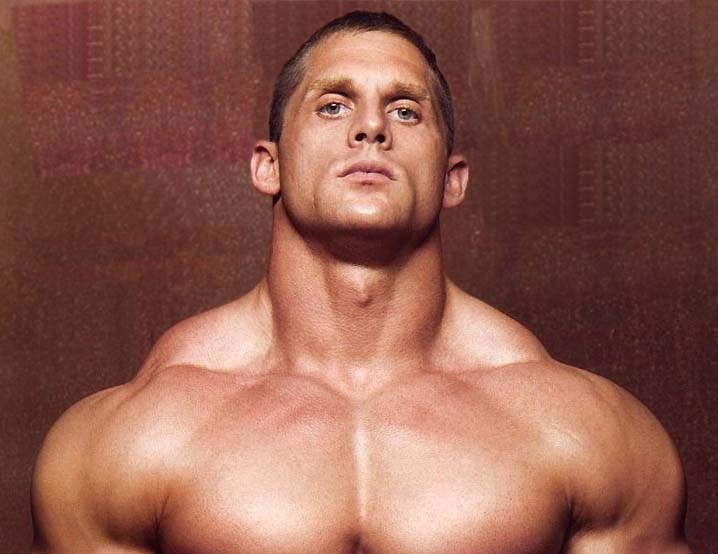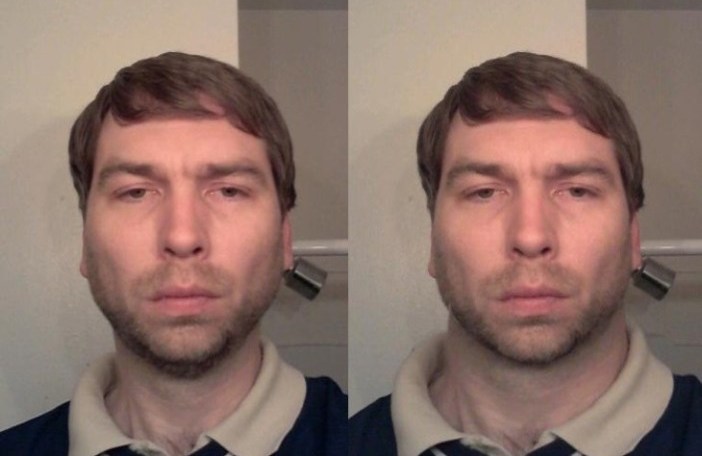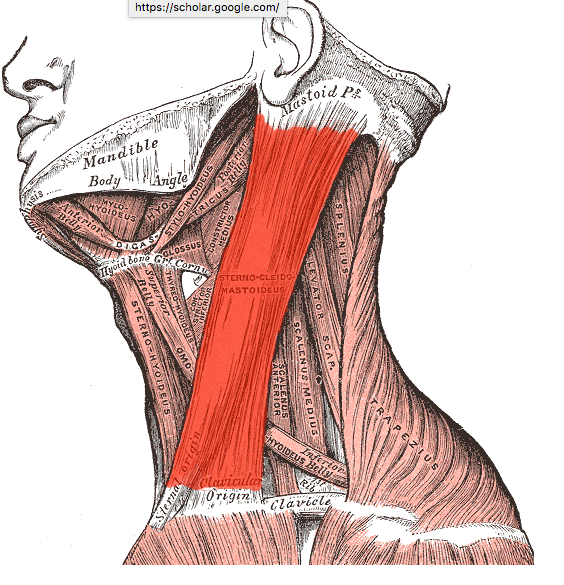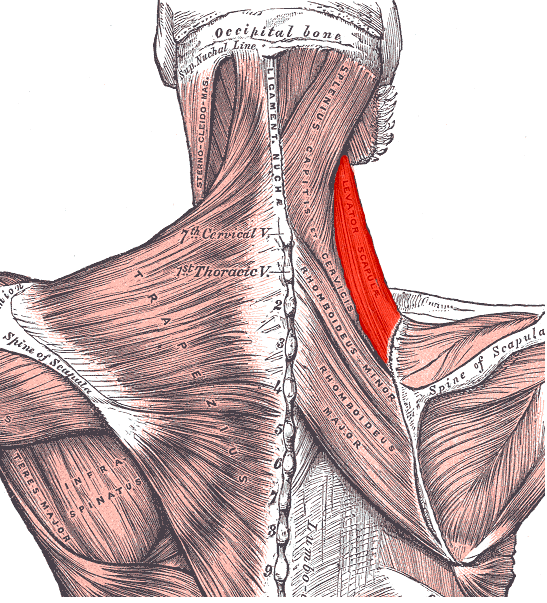Hey there!
Historically, people who were looking to build a big neck did so only for combat sports. Nowadays, however, growing a thick neck is becoming increasingly popular among gym-goers.
When I started lifting in 2012, I watched gym fails compilations in which people would train their neck and jaw in an innovative way, only to be laughed at and discarded. For many meatheads, back then, it was just like training forearms or calves: why bother with small muscles that grow very little on a bro split? Well, neck training used to fall into that category until recently.
Today, the benefits of having a thicker and stronger neck cannot be denied either by science or by actual athletes. These benefits go well beyond just improving athletic performance!
So, here’s my complete guide to why a big neck is more attractive, how to build a bigger neck and neck training benefits and exercises as a whole. I’ll do my best to try and answer some questions such as: why should you get a strong neck? How does a big neck benefit your health and appearance? How can you get a big -or bigger- neck fast? What is a thick neck defined as, and how is it measured? Is a thick neck associated with sleep apnea?
What Are The Benefits of Getting a Bigger Neck?
1. Neck Training Will Help You Get a More Attractive/Masculine Look
First things first: why should you build a thicker neck? Well, in terms of aesthetics, a wood log neck looks good. Neck muscles are very appealing for men -and women- as they will enhance all the facial features and make your jawline look better, as well as your whole body. If you want to know more about these specific topics, make sure you read my 10 steps to naturally look good and check out my full guide on jaw training.
Many celebrities, models, and even inmates have suffered the consequences of a photoshopping trend and “big neck vs small neck” memes that make them appear weak and frail. Check them out below: they look like Disney characters, sick and frail with a skinny neck, while their normal neck makes them look handsome.
An average man’s neck size ranges between 35,5cm and 48cm (14′′ to 19′′), with a medium value of 40,5cm or 16′′. Training your neck will substantially improve your appearance and your safety, regardless of your height, your build, your BMI, and your overall muscle mass.
2. A Tougher Neck Will Become More Resilient to Concussions/Impacts/Collisions
Why should you build neck muscle? Having a thick neck has more benefits than just looks. The neck muscles are located all around the neck, so they function as both a support system and a stabilizing mechanism. Think of all the contact sports like rugby, MMA, wrestling, and football, which involve a lot of contact, impacts, and collisions. All athletes, especially the best ones, have an ultra-thick neck that protects them from concussions and reduces the likelihood of being knocked unconscious by decreasing the chances of the brain moving within the skull, and by reducing the possibility of spine traumas.
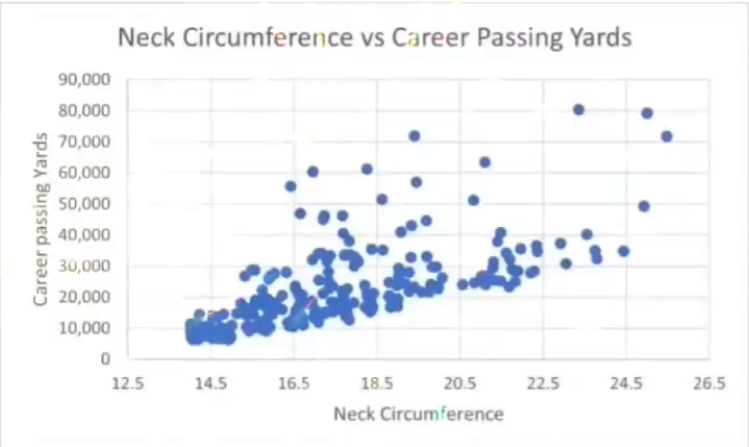
Neck training is important: a bigger neck means better performance and longer longevity in sports
Two studies performed by Collins, Comstock, and colleagues on football players indicate that players with a bigger and stronger neck had a lower chance of getting concussions, and that one additional pound of strength in neck extensors could reduce concussion risk by 5%. Even in no-risk situations, neck muscles play a big role in preventing injuries to the cervical spine and reducing the risk of zingers. Additionally, neck muscles can help prevent some cases of zingers after falls and car accidents.
3. You Will Feel Less Tightness/Pain and Avoid Neck Stiffness
People can suffer from soreness, pains, tightnesses, and aches in the neck area due to bad posture, sitting for too long, stress, muscle knots, repetitive damage, and poor sleeping positions. Torticollis can occur just from sleeping in a wrong position or from a quick head movement. Again, strengthening the neck is the most efficient and preventive strategy to avoid these aches and pains.
Training the neck muscles will not only improve your head posture and reduce pressure on the cervical spine, but it will also strengthen the bones, tendons, ligaments, and the entire area since the stress of training will reinforce everything as a whole. If your body detects a weakness, it will do everything it can to secure the region. However, if everything is strong and conditioned, the neurological system will recognise it and allow the area to rest, because the resting tonus and muscle mass are already keeping the area in the normal state. Joints benefit from movement as well, as it improves blood flow, synovial formation, and lymphatic drainage.
4. Neck Training Improves Nerve Impulses
The neck, like the midsection’s core muscles, binds the head to the body, much as the core binds the legs to the trunk. To draw a simple comparison, having a stronger core helps with deadlifts, squats, and overhead presses because power is transferred from the feet to the back through the middle. When doing these exercises, you’ve never been limited by anything but your core (and grip for deadlifts), right? We’d all be squatting as much as we could leg press if it weren’t for that. Running, throwing and fighting sports are similar in that power is transferred through the hips and core, while the legs and feet provide the initial energy.
The same is true for larger neck muscles: if the area is tight and strong, you’ll be more likely to maintain a strong position during any movement. If it’s weak, you’re out (think of those people who look so high up during their squat exercise that their lumbar rolls, or those guys who swing their heads while sprinting when they’re supposed to be still). In short, when it comes to growing strength and longevity, a larger and stronger neck is a huge bonus.
How to Train the Neck
1. Anatomy of The Neck Muscles
How does neck training work? What are the best neck strengthening exercises? Let’s have a look at this basic summary of neck anatomy before we go any further: there are several muscles in the neck, all of which are designed to move. Their role is to preserve the spinal column from stretching down while allowing humans to view in all directions (the cervical spine can move a lot).
- The sterno-cleido-occipito-mastoid muscle (SCOM) is the principal muscle responsible for flexing, turning, and bending the neck laterally. It is located in front of the neck.
- Then there are the scalenes, which are muscles that are a little deeper and help with neck flexion, as well as rotation and lateral tilt.
- Finally, we’ll group the neck muscular extensors into one category to make teaching and comprehension easier. The erector spinae, upper trapezius fibres, splenius capitis, inferior and superior obliques, head longissimus, scapulae elevators, and other muscles in the back of the neck are all classified as “neck extensors” because their primary or secondary function is to extend the spine, while some also allow for rotations and lateral curls.
So, how are we going to train all of them? Well, there are two approaches: large-scale systemic compound lifts and focused isolation work.
2. Compounds Lifts for a Bigger Neck
In most cases, the routine workout you – and hundreds of others – conduct contributes to the development of the neck. The greater the overall tension created by lifting or carrying heavier weights, the more your neck is mobilized just by internal pressure.
All of the deadlifts, block/rack pull variations, high pulls, and squat variations will help you develop your neck girth simply by forcing you to breathe under weight, as well as by putting the trapezius to work a lot. As previously stated, these latter are mainly responsible for neck growth, particularly in the upper fibres.
As a result, heavy shrugs and strongman training, such as yoke walks, farmer walks, stone lifts, loaded carries, and so on, will be beneficial. Think about it: have you ever seen a good strongman/weightlifter/powerlifter with a toothpick neck? I haven’t.
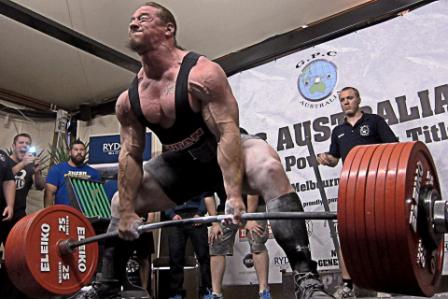
Dan Green, Elite Powerlifter. His best competition lifts in the 242 lbs (110 kg) weight class are an 848 lbs (385 kg) squat, a 530 lbs (240 kg) bench press, and an 837.5 lbs (380 kg) deadlift.
As shown in the graph below, even pump-designed exercises like lateral lifts can induce a growth response in some neck muscles, such as the upper traps and splenius:
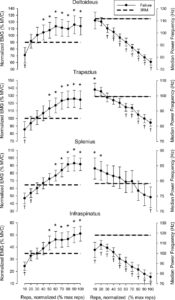
After all, feeling the traps and some inner material at the base of the neck might not be such a horrible motor pattern!
Unfortunately, we all know folks with good – sometimes even amazing – physiques but with a pencil neck, despite doing a lot of compound lifts and having massive arms, chest, legs, and backs. As is the case with most things, genetics play a considerable influence, forcing some of us to engage in neck training only to obtain an average neck size. This also happens to skinny guys who bulk up without considering how to build a ticker neck at he same time. Building muscle in general will do little to help your thin neck. This gets us to the isolation stage:

Don’t be that man with a pencil neck. Just don’t.
3. What Are the Best Isolation Exercises to Include in Your Neck Training Routine?
Neck curls, neck extensions, side rotation, and neck side raises are isolation exercises that focus on the neck, therefore we’ll work on those directly. All of them must be done to achieve an evenly developed neck with no weaknesses or imbalances, thick from the front, both sides, and back, creating a powerful -if not intimidating- appearance.
Make sure you get a good neck harness to ensure that all of the movements are done safely and comfortably, so you’re not just pulling your skin or hair out, or worse, putting your spine at risk.
The Neck Flex, which you can find here is the best neck harness I’ve ever used. Use the coupon Hersovyac10 for a 10% discount! One of the big pros is that you can even use it at home to strengthen your neck. Also, check out my NeckFlex honest review.
Watch my video below for a thorough lesson on How to Grow Bigger Neck Muscles, including all of the isolation exercises explained:
Neck Building and Programming
How can I develop a thicker neck quickly? What is the best neck training? There are several schools of thought when it comes to programming. Here are some of the most effective exercises I’ve tried:
1. Manual Resistance/Machine High-Intensity Training Method for the Biggest Neck Ever
Frequency: 1-2xweek, so you don’t have to train your neck everyday
Sets/Reps: 1×6-10 with 8-10s eccentrics until failure
Overview: The goal is to absolutely kill the muscles in one set – that one will seem like an eternity- with a partner doing manual resistance, or with a neck machine (extremely unusual), you will be able to achieve the perfect resistance profile and resistance curve. This, however, is extremely demanding on your muscles, joints, spine, and nervous system. This is not a good place to start if you’re new to neck training.
At 120kg/265lbs, Joel Waldman, a well-known proponent of this procedure, grew a 53,3cm/21″ neck. It appears to be quite practical in terms of time, as he stated that it took him only 8 minutes to exercise his entire neck.

Joel Waldman, Champion of the Biggest Neck Contest
2. High Volume Training Method to Strengthen the Neck
Frequency: 3-4xweek
Sets/Reps: 3×100
Overview: the objective is to condition the neck muscles to long-term efforts, increase exercise capacity, raise pain tolerance, and strengthen connective tissues, bones, and muscles. This method is ideal for beginners and strength athletes to begin with in order to become used to neck training: it’s quick and simple to include into a regular training routine while learning the technique, experiencing it, and so on.
Mike Bruce “The Machine,” a world record holder in neck strength feats and a highly skilled wrestler, uses this trainig method to achieve health and longevity with mass. At 90kg/200lbs, he built a 51cm/20″ neck.
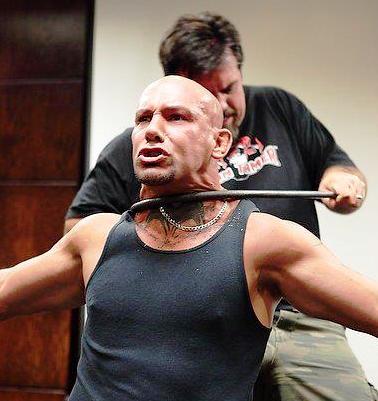
Mike Bruce “The Machine”, famous for having a few steel bars bent on his throat… Are you choking?
3. High-Frequency Training Method for a Massive Neck
Frequency: 5-7xweek
Sets/Reps: 3-5×20-30
Overview: This is a tough program that works your neck on a daily basis. In season, the majority of wrestlers, football players, and combat sports athletes do it (a mix of specific isolated work, helmet wearing and impacts they withstand). That’s the strategy that can produce a massive growth spike in a matter of weeks, as well as consistent growth in few months. In barely 4 months, several of my trainees and I gained about 5cm/2″. Because the frequency will take care of the non-stop stimuli, the majority of the exercise should be done with a band to reduce joint strain and speed up recovery.
Take a look at Herschel Walker (I’ve written about him here for an example of a beast with a sturdy neck thanks to that approach. He has a 51cm/20″ neck and weighs 102kg/225lbs. However, I would advise you against using this method for more than 6-8 weeks at a time.
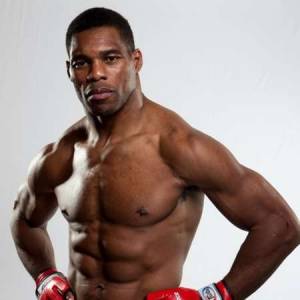
Herschel Walker, a proponent of the High-Frequency Training Method to get a huge neck
4. Hersovyac’s Method – The Ultimate Neck Training Workout
Frequency: 2-4xweek
Sets/Reps: 3-5×15-30
Overview: to be honest, this is a hybrid of all of the strategies we’ve discussed so far. I’ve been doing it since around 2017. Two days a week, I utilize plates and heavy bands to strengthen my neck, and one or two days a week, I use the Neck Flex band. This way, every other day, I have a couple of days of high stress, free weight, high intensity, and other days where it’s more about volume and pump work.
The HFT method led to the most spectacular gains for me. I have a 47,5cm/18,7″ neck and weigh around 80kg/176lbs at the time of writing this article.

Hersovyac, author of this neck training hands-on-guide, July 2020
5. Neck Bridging: The Controversy
Are neck workouts safe? You’ve probably noticed that I’ve left out the most ancient and traditional method of neck training: neck bridging. Ironically, despite popular belief and high praise, it is a suboptimal, higher risk/reward ratio exercise that does not encourage the longevity aspect we seek. Let’s take a look at what science and empiricism have to say about it.
- First and foremost, this is a technical exercise that requires proper technique and learning in order to be carried out safely, something that not everyone can or has previously mastered.
- Second, moving your head from front to back, sides to sides, or rolling on it generates an excessive compressive force on your cervical spine. Imagine your discs being squashed and cut by the compression and shear forces (gravity pulling one way while your disc goes another way).
- Lastly, there are safer and more efficient alternatives to all of the exercises and movements that may be performed to work your neck. Whether you’re doing back or front neck bridges, they’ll always be less efficient and riskier than variations using plates, bands, or manual resistance.

There’s a reason modern athletes train with modern techniques!
Keep in mind that it’s called a wrestler’s bridge for a reason: it’s a part of their sport to train in this position (where your back and shoulders can’t touch the ground). Bridges must be practised by wrestlers just as much as squats must be practised by powerlifters.

Because pinning the back/shoulders to the ground in Wrestling is a win, you must lean on your head down to avoid that position. You must be able to tolerate having your head crushed against the ground because many falls occur.
What kind of risks and injuries are we talking about now? Even if you use proper technique for years, you may develop a nerve impingement (a nerve that has been pinched by a muscle spasm), a split, or a damaged disc that will eventually lead to a hernia. Additionally, bone spurs or overgrowth surrounding the spine and its extremes may form, causing persistent nerve pinching and an increased risk of arthritis and arthrosis (even if both often come together).
All of this will disrupt your nerves in your hands, arms, and shoulders, obstructing your sense of touch by making you tingle, or experience chilling sensations or burning feelings in your fingers, elbows, or you will feel heaviness and weakness when moving your arms and shoulders, or else cause sensory loss, as seen in demyelinating syndromes. When nerves are injured, this is a frequent thing. The only two options for treating these problems are to remove part or all of the disc and fuse the two vertebrae together, or to implant steel rods to maintain everything in place.
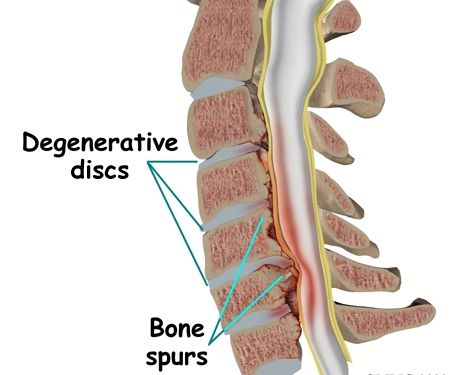
“Aging, degeneration, mechanical instability, and disease all contribute to a variety of bone-formation processes (such as diffuse idiopathic skeletal hyperostosis). Osteophyte formation has traditionally been linked sequential and consequential alterations in these processes. Often, osteophytes are a result of inflammation-induced injury in osteoarthritic joints . Calcification and the development of new bone can also occur as a result of mechanical damage in joints.”
Mike Tyson, sadly, experienced this. With daily rolling neck bridges, he grew a 52,1cm/20,5″ big neck, which eventually led to a slipped disc that degenerated and left him with a damaged neck for decades.
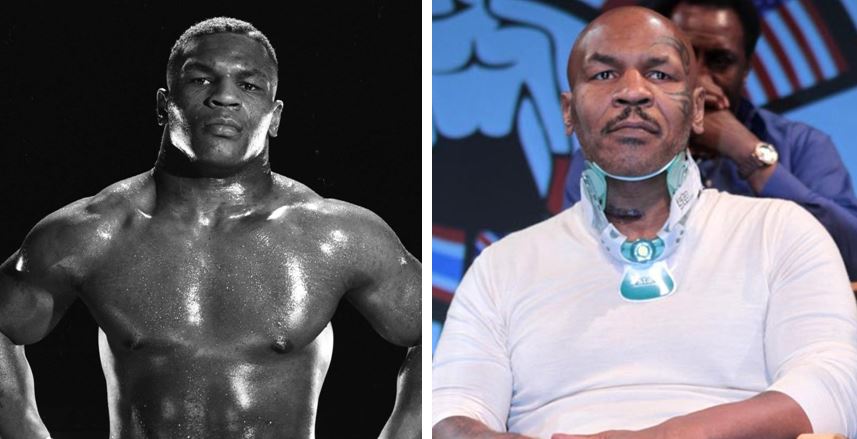
Mike Tyson, the man that beasted that neck out a bit, prior and post neck surgery in 2012
So, given everything that has been said, if you really want or need to neck bridge, train and condition it first, and only practice isometric holds. I’ve done a great deal of neck bridging techniques, and I can assure you that the movements do not produce the same sensation: even with heavy loads, you can feel your muscles working while your spine is fine, whereas with neck bridges, you can definitely feel an internal pressure when you should feel muscles burn or strain instead.
NB: To you metalheads, yeah, headbanging can be fun and a great workout that leaves you with a bull neck and a massive pump… but you put so much accelerative force and strain on your spine that you end up having the same issues as bridging down the road. So, once again, strengthen it properly and take a break from the headbanging, OK?
Is Neck Training Safe?
As we saw before in this article, having a bigger and stronger neck enhances your look, boosts spine health, longevity, and decreases the risks of injury. But is neck training dangerous in itself?
1. Neck Training and Injuries
Neck training is identical to any other body part training in that you can have good or terrible form, a lack of warm-up, insufficient stretching, too much momentum, and a substandard apparatus (in the case of neck, it would mean that you are using a poorly manufactured or a too fragile neck harness).
There is little to no chance of injury if good form is maintained, with proper load + rest period + recovery + stretch + warm-up, much like the rest of the body.
You only need to take things slowly because it’s possible that you haven’t yet conditioned your body to support a muscular effort. After that, it’s business as usual: progressive overload, patience, intelligence programming, and voilà.
2. Loading the Spine with Neck Flexion and Neck Extension
Squats and deadlifts with flexion, as well as overhead press and several high-loading standing exercises with extension, are common causes of spine injury. Basically, the muscles that keep the spine in place are no longer able to do their job, so the posture is no longer safe, the ligaments can only hold so much, and the intervertebral discs are dragged out or squeezed hard. At best, it causes muscle cramps and tweaks, and at worst, it causes herniated discs or shattered vertebrae.
Of course, a neutral spine is required for these exercises, but we also have a lot of activities where flexion is implied (crunches variations), and likewise for the extension (back extension variations). Some workouts, such as reverse hypers and toes to bar, combine the two. What about the neck, then?
As always, context is key. Your neck will never be used to lift or move big weights. Most people will find doing neck curls and extensions with two plates challenging (for volume work and high rep range), but it will already result in solid neck development. Spinal flexion and extension will help pull and flex stiff muscles that haven’t been trained or used, as well as keep blood, synovia, and lymph flowing freely. It’s normal, just like the rest of the body. Muscles, bones, and ligaments become stronger and bigger with time, as we’ve seen.

This is oversimplified and cannot be executed by anyone, but it captures the essence of what I want you to picture.
Of course, if you have poor technique or a wide range of motion, you can tweak or pinch something: I had it a few times with heavy neck extensions on the neck head harness, where I was getting so low and stretching my neck so hard that a small muscle between my shoulder blades constricted. It didn’t hurt my neck, but it wasn’t very comfortable either. So take note of what I’m saying: proper ROM, proper form, warm-up, stretch, and recovery to the T.
3. Neck Size and Obstructive Sleep Apnea (OSA)
The most serious disadvantage of having a large neck, aside from the fact that “you will struggle to close the first button of your suit,” is that it is thought to cause sleep apnea. Multiple things, such as the tongue, the relaxation of the soft palate, and the soft tissues of the throat, can obstruct your breathing pathways, resulting in sleep apnea. According to numerous studies, the larger your neck is, the more likely you are to get OSA.
Three studies, however, contradict the too-generic conclusion that people with a big neck are just doomed to suffer from this condition.
The first study, by R.J. Davies and J.R. Stradling, shows that the neck circumference is the biggest factor:
“We have studied the predictive importance of neck circumference, obesity, and several radiographic pharyngeal dimensions for obstructive sleep apnoea (OSA), in 66 patients. […] We conclude that the relationships between general obesity, hyoid position, soft palate length, and OSA are probably secondary to variation in neck circumference.”
The second study, by I. Katz and colleagues, gives more details about the problem, which actually comes from the fat that is around the neck, not from the muscles:
“During physical examination of patients with suspected obstructive sleep apnea (OSA), a comment is frequently made that they appear to have a short and fat neck. To confirm this subjective impression by objective measurements, we studied a group of 123 patients referred to us because of snoring and suspected OSA,[…] We conclude that the external and internal neck circumferences and the degree of obesity are important predictors of sleep apnea; it is possible that obesity produces its effect via fat in the neck. We speculate that the static pharyngeal size modulated by the dynamic loading of the airway due to the weight of fatty tissue of the neck may contribute to the pathogenesis of OSA.”
And finally, this one from M. Partinen:
“Katz and colleagues show that patients with OSA have thicker necks than nonapneic subjects. […] It is easy to understand, as the authors write, that obesity produces much of its effect via fat in the neck. […] Neck circumference probably is important in the pathway of developing OSA, but solving the problem of obesity is more important in the prevention of OSA – and many others diseases.”
In other words, don’t be concerned about strengthening your neck. You may start snoring more frequently, but you will never develop true OSA. Additionally, when you lie on your back, your pectorals push down on the breathing airways a little, which means that if you’re a jacked dude, you’re probably already snoring. In any case, sleep on your side with a good pillow to avoid any uncomfortable breathing, and if you need to shed pounds, focus on that.

Truth is: this guy has a higher risk of developing OSA than you, who strain your neck like crazy.
Conclusion
- Neck training is designed for combat/contact/extreme sports athletes, as well as competitive bodybuilders/amateurs who want to improve their overall flow.
- The Neck Flex is the most effective neck builder. Get this fantastic neck training gear right here and use my code HERSOVYAC10 for 10% off.
- Compounds are still important for most people, especially when it comes to traps and neck building.
- Headbanging/Neck Bridges are fine in the short term, but they’re far riskier than band/harness/manual/plate resistances in the long run.
When it comes to building an overall powerful physique: don’t neglect your neck!
Your lightkeeper,
-Hersovyac.

